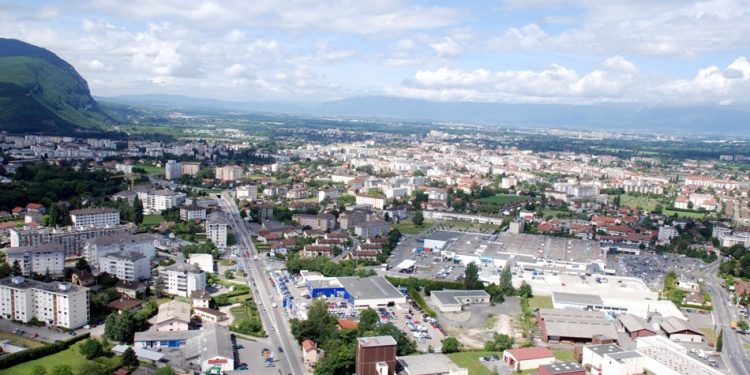Bibhu Dutta Basantia
Annemasse is a small town in eastern France. It’s just 4km off Geneva border and many expats who can’t afford exorbitant Geneva rents and hotel rates come and stay in Annemasse. Residents of Geneva prefer to come and shop in Annemasse as shopping there is more affordable compared to Geneva. As part of a UN team, I stayed in Annemasse for a month in 2015. We thoroughly enjoyed our stay in this small town of 35,000 people.
What struck me while staying there was how liveable the place was. In five square kilometres, you have shops, markets, a city centre buzzing with activity, churches, kids’ play areas, walking tracks, educational institutions etc, apart from abundant greenery. The city has a near-perfect transport system merging seamlessly with those of Geneva. The trams, railways and buses make the public transport system very efficient.
While moving around the length and breadth of the country, what struck me forcefully was how unliveable our cities have become. We are in the midst of a large urban ghetto and still complain that we have low urbanisation at 33 per cent. This signifies low economic development. Cities are where wealth is created, innovation is cradled, creativity is nurtured, risk-taking is taught and employment generated.
City-watchers mostly recognise five main features of a liveable city – lively neighbourhood, accessibility and sustainable mobility, a diverse and strong local economy, vibrant public spaces, and affordability. We also recognise social and environmental sustainability as factors contributing to liveability of the cities.
Real estate prices in cities have made accommodation unaffordable. The rich have created gated communities for themselves, oblivious of the fact that beyond a furlong from the gated community one could smell the stench of the open sewer or the sight of an ungainly slum. No man is an island; therefore, urban planning for the last man living within the precincts of a city is most imperative.
If a third of India lives in cities and towns, only a sixth of Odisha does so. Unfortunately, most cities and towns in Odisha are turning into urban ghettos. The twin cities of Bhubaneswar and Cuttack do not have modern drainage and sewerage systems. A CAG report in 2017 brought out these issues, and it was stressed that the sewerage projects would be completed by end 2019. The work is still ongoing.
The BCRSB (Bhubaneswar, Cuttack, Rourkela, Sambalpur and Berhampur – all municipal corporations) lacks modern drainage and sewerage, modern city transport facilities, good arterial-road connectivity within the city, and lack of basic neighbourhood public amenities like parks and playgrounds. The cities are growing in a haphazard manner. Could there be practical, yet cost-effective models of growing the cities that could be the pie of the sky for even a poor resident, de-clog the city centre and make the cities more sustainable?
The low level of urbanisation in Odisha provides a unique opportunity to work for the planned future growth of our cities in more socially and environmentally sustainable ways. A socially sustainable city provides for housing for its citizens of all walks and all income groups. The basis for housing is to bring higher FAR for group housing, making it mandatory for builders to have minimum amenities within its boundaries, and freeing land under the government’s possession for housing. The Odisha government has announced such a plan, but the government needs to ensure road, water, sewerage, transport and other amenities. The state must be a facilitator for planned growth through infrastructure development.
A socially sustainable city needs proximate healthcare and primary educational facilities. The government may provide land, if not create the facilities by itself. The private sector would bring in facilities to cater to the population. A socially sustainable city provides for every income group, and therefore, giving them the security of a house and a means to reach their workplaces (transport). This would encourage people to move away from the city centre. That is how best cities in Europe have developed – by creating satellite townships that are as good as or better than the centre of the city in terms of liveability index.
An environmentally sustainable city would have quality water treatment plants, sewage disposal system, and clean water. Regrettably, in Bhubaneswar and Cuttack, the rivers of Kuakhai and Kathjodi (and Mahanadi) have become dump yards of untreated water, sewage and filth.
Cities need to grow to nurture economic growth. Also, the government needs to spend money to give back to the cities from where it derives bulk of its revenue. A smart-city programme for the state will be appreciated.
The writer is Accountant General, Odisha. Views are personal.






































